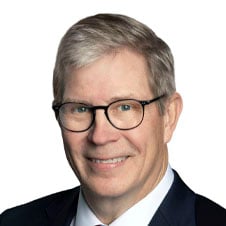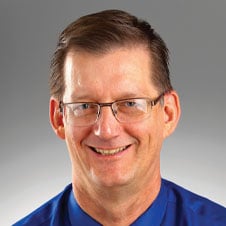“Rural surgeons are dying and we have to do something about it.”
Gary Timmerman, MD, remembers when several of his fellow surgeons delivered that message to the American College of Surgeons’ Board of Regents in 2008.
They are also aging—and retiring. Rural surgeons over 50 are double the number of urban surgeons in their 40s. By 2030, “we could lose up to one-third to even half of our surgical workforce in rural surgery,” said Dr. Timmerman.
Several factors deter surgeons from pursuing a career in rural areas. One is lean case volume that doesn’t make full use of newly graduated residents’ surgical skills. Money is another factor: a rural surgeon on average makes one-third of what a surgeon makes in a large urban center.
Primary care doctors in rural communities often find themselves in precarious situations if a patient has a ruptured appendix or an inflamed gallbladder, and there’s no surgeon to help them out. They end up having to transfer patients to another facility, sometimes far away, for the surgical intervention they need.
Dr. Timmerman, professor and chair of the University of South Dakota (USD) Sanford School of Medicine Department of Surgery in Sioux Falls, has been on a mission to produce rural surgeons who “really love where they’re at.”
In 2014, Dr. Timmerman led the creation of the state’s first new general surgery residency program in decades with the stated mission of training rural surgeons who provide excellent surgical care.
Given the 1990s-era caps on the number of federally funded residency positions, Sanford Health pledged an initial $2 million to USD to bring the new program to fruition. Sanford Health is a member of the AMA Health System Program, which provides enterprise solutions to equip leadership, physicians and care teams with resources to help drive the future of medicine.
The AMA supports bipartisan congressional legislation that would add a total of 14,000 new Medicare-supported graduate medical education positions over seven years. The AMA also has helped fund innovative efforts such as the University of North Carolina School of Medicine Fully Integrated Readiness for Service Training, which helps place resident physicians—including surgeons—in rural areas.
A mission to build rural health
In an interview, Dr. Timmerman joined David Theige, MD, medical director for graduate medical education at Sanford Health, to discuss the program’s 100% success rate in attracting surgeons to rural areas.
Moving out into a rural community and being the only person in your specialty or almost the only person with limited immediate assistance, requires some courage and confidence, noted Dr. Theige, who works with Sanford’s residency and fellowship programs.
Surgeons need time to gain familiarity and comfort with their new, rural environment, he added.
As the only general surgery residency in the state, the program was a work in progress, said Dr. Timmerman. “You don't develop a residency overnight. It's a bit of an endurance race.”
Residents spend most of the 60 months of their training at Sanford USD Medical Center in Sioux Falls, although they have the opportunity to rotate through other local health systems for several months at a time.
The mission was to help build the health care workforce for the people in the region, noted Dr. Theige. “We can't do it all. We can't do it all by ourselves, especially. So, part of that vision is really close partnerships with our affiliated medical schools.”
Rural life appeals to some doctors
Dr. Timmerman was amazed by how popular the program was in the first year, when 700 applicants vied for just three slots in the residency match.
“I kept thinking … why?” he said.
Some medical students found the concept of a rural residency appealing. They had grown up in a rural setting and wanted to return to those roots, or they had an interest in missionary work. Others liked the idea of using all the skills they learned over a five-year period.
“When they get here, they see that they have the opportunity to practice big-city medicine in a smaller-town environment,” said Dr. Theige.
Bringing surgeons to the Midwest
About 80% of residents and fellows end up practicing within three hours of where they train. Of the 17 chief residents who have graduated from the USD program to date, all chose to practice in rural areas.
Ten have gone into general surgery, while seven opted to subspecialize. Nationwide, only about 20% of surgeons choose general surgery as a career. Not all of the general surgery residency program’s graduates went to work for Sanford, noted Dr. Timmerman. But the program met its goal: residents returning to the Midwest to practice in a community of less than 100,000 people, repopulating the depleting supply of rural surgeons in the Dakotas, along with states such as Iowa, Minnesota and Wisconsin.
Attracting surgeons coast to coast
The residency has since expanded from three residents per year of training to four per year. The pool of applicants has stayed about the same, but it’s become broader, representing medical students from around the country.
Medical student applicants have hailed from all over the United States, including Alabama, Maryland and the Pacific Northwest. The program also continues to attract medical students from the Dakotas.
Graduates of the surgical residency program who have gone on to do fellowships in Philadelphia, Michigan or Louisiana end up coming back to practice in South Dakota or in rural areas in the Midwest. That's very much a blessing, said Dr. Timmerman. “But I also know it's kind of inside of them. That's what they want to do. They want to be doing rural surgery to the extent that they can still make a living.”
Rural communities in the Dakotas are often referred to as “flyover country,” said Dr. Theige. “But in reality, those of us who live here and love it here feel that we're in small cities that actually offer a lot of amenities and some real lifestyle advantages that many of our candidates are attracted to.”
Sanford planning more expansions
Looking beyond surgery, Sanford Health plans to launch eight additional residency and fellowship programs over the next eight years. The health care system is investing in needed programs where federal dollars simply are not available. Recent projects include a new neurology training program in Sioux Falls with the University of South Dakota.
“A year from now, we'll be collaborating with the University of North Dakota to launch the first pediatrics residency in North Dakota,” said Dr. Theige.
“We'll be doing approximately one new program a year for a number of years to come,” he added.
—AMA News Editor Kevin B. O’Reilly contributed to this report.





